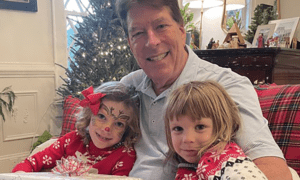For many years I have been on the mailing lists of top New York publishing houses to receive books that deal with Southern life or its people.
Each sealed envelope offers a moment of excitement before I open it. In those first seconds when I read the return label that has the name of the publishing house and the location of New York City, I anticipate that I am about to discover a new, wonderful work of Southern literature or nonfiction, a tale that I will fall into and savor to sweet satisfaction
Too often, though, I am sorely disappointed. Sometimes the book is written by someone who lives in the South but wasn’t born here to Southern-bred people. To write it authentically, I hold to the belief that you should have inherited it like blue eyes or dark hair.
A true Southern writer should rise up from unforgiving dirt that, sometime in the last hundred or two hundred years, threatened to starve your people, or you were raised in the unique gentility of a town immersed in Southern culture and character.
Like Yazoo City from which cometh the beloved Willie Morris and a town that was home for many years to Grand Ole Opry star and legendary storyteller, Jerry Clower.
With reverence, I have driven by Mr. Morris’ childhood home as well as the nice, modern brick ranch home of Mr. Clower. I’ve visited the grave of Willie Morris, too. Nearby in the same cemetery is the burial site of the Witch of Yazoo, a character made infamous by Morris’ retelling of a legend.
Only in the South could the character born of a writer’s imagination be given a grave, a monument, and a chain to keep her in (she is said to have once burned down Yazoo). This is how genuine a story written by a true Southerner feels.
Here’s another bothersome nag about the somewhat Southern books that come these days: They’re overly dark and despairing. Flannery O’Connor of Milledgeville, Georgia, was known for the Southern Gothic tales she expertly spun.
It takes wit, expertise, and a deep understanding of Southern characters and way of life to write as did Miss O’Connor and Eudora Welty. Despite the deep, darkly tinted stories they intricately wove — “A Good Man Is Hard To Find” and “The Petrified Man” — they presented them with an air of humor. That isn’t easy to do.
A couple of years ago, an Atlanta-based magazine featured a story on “Southern” writers. Only two of the seven had grown up anywhere within Southern borders. The other five had moved there, all in adulthood.
It’s hard to learn our brand of storytelling past the age of 12. With respect to their talents and craft, these people aren’t Southern writers. They are, instead, people who write about the South.
Take Terry Kay of rural Georgia, for instance. One of his earlier books, “To Dance With the White Dog,” is still considered one of the most outstanding Hallmark Hall of Fame CBS presentations. It starred the husband-wife team of Jessica Tandy and Hume Cronyn and won an Emmy.
Terry, a true Southern gentleman, is one of the South’s modern literary authors. Only someone who lived it as a small child could have written so effectively and movingly of the moment that electricity first sparked in a country community: “The Year The Lights Came On.”
Ferrol Sams was a stereotypical small town doctor in Fayette County, south of Atlanta, carrying a black satchel and making house calls when he first put pen to paper and delivered memorable, powerful characters while North Carolina’s Clyde Edgerton crafts authentic dialogue and humor in works such as “Walking Across Egypt” (one of my favorites).
“Memory believes before knowing remembers,” opined Mississippi’s William Faulkner.
Yes and therein lies the secret: Memory of childhood, of place, of characters and dialogue create true Southern writers. Much more than knowing does.
[Ronda Rich is the best-selling author of “Let Me Tell You Something.” Visit www.rondarich.com and sign up for her free weekly newsletter.













Leave a Comment
You must be logged in to post a comment.